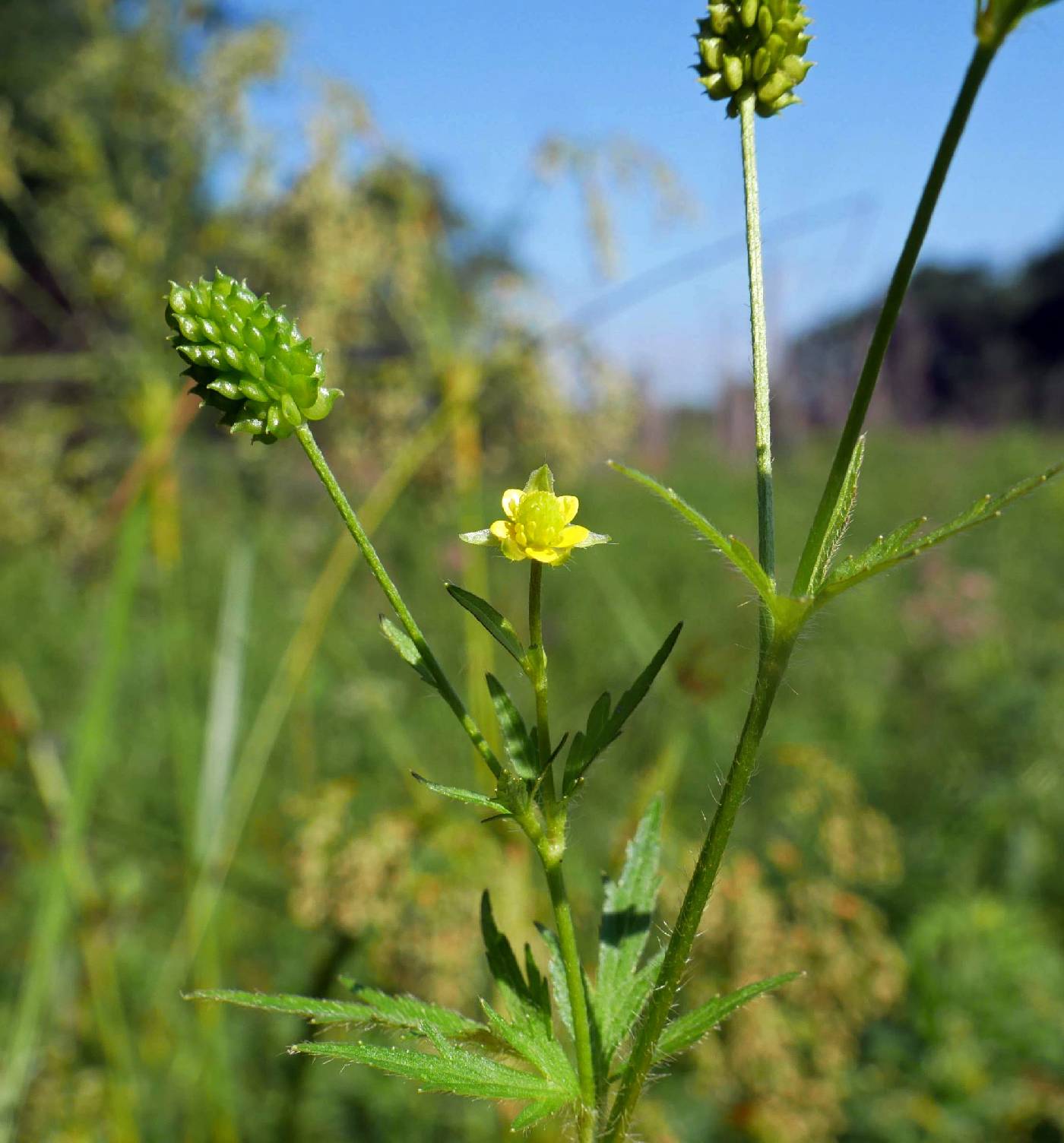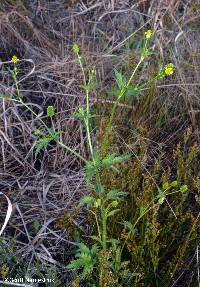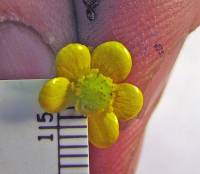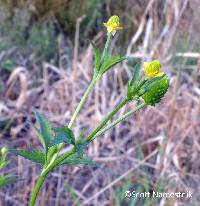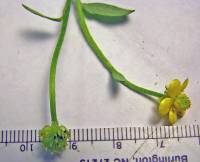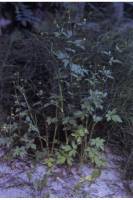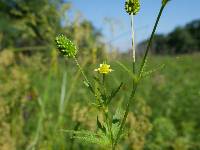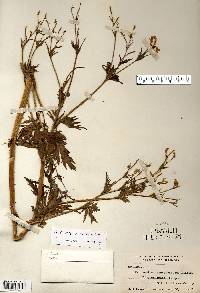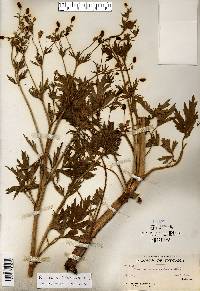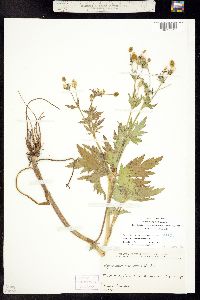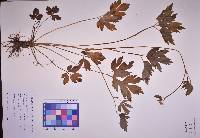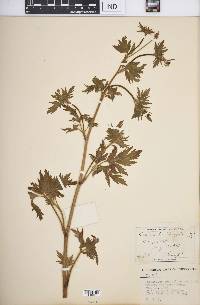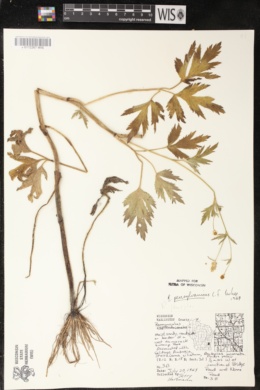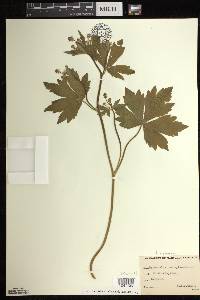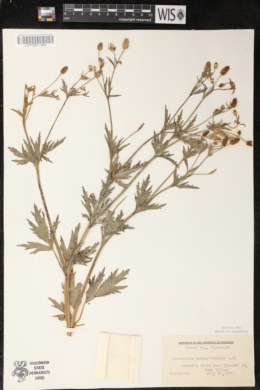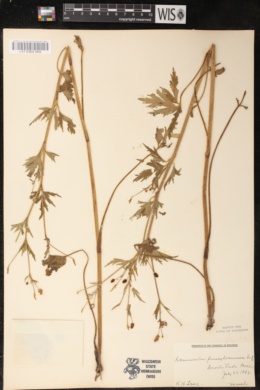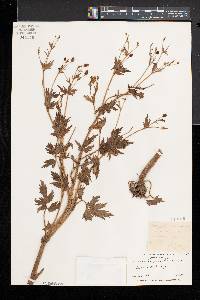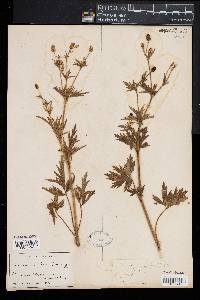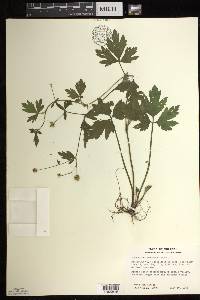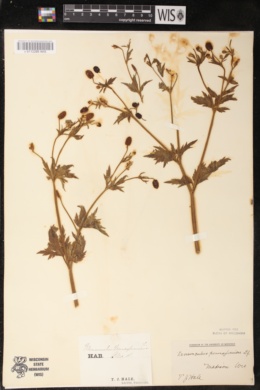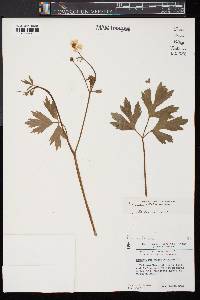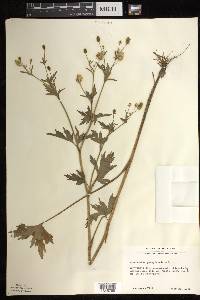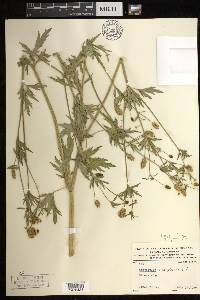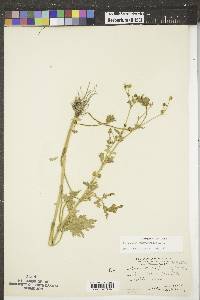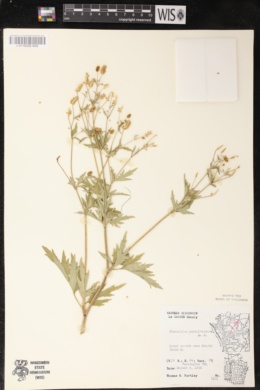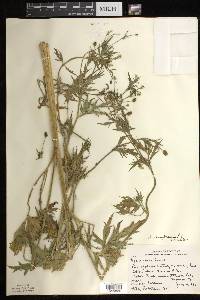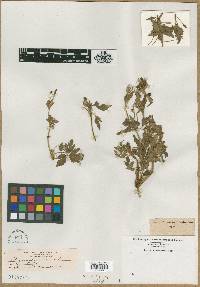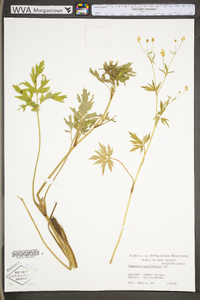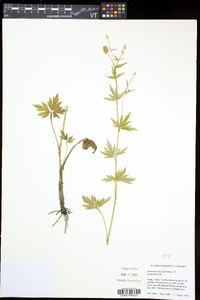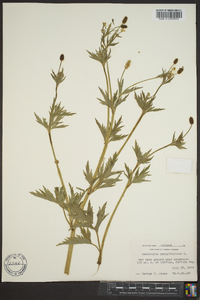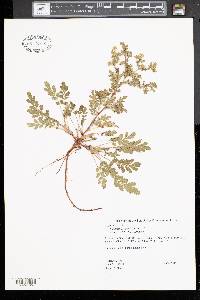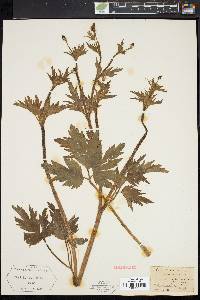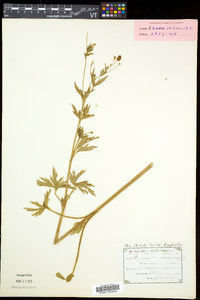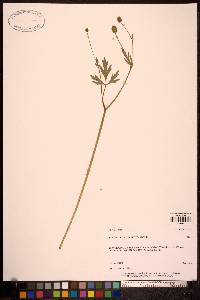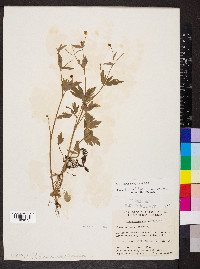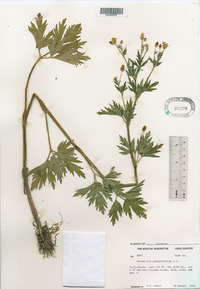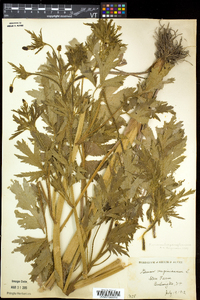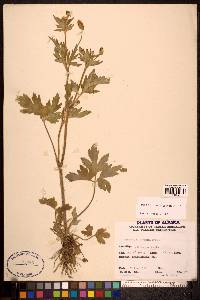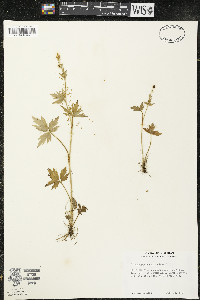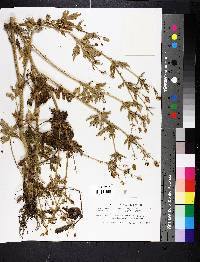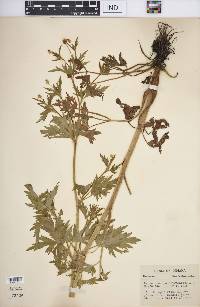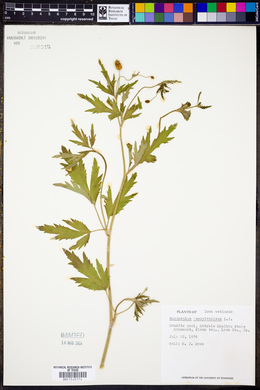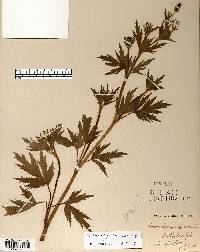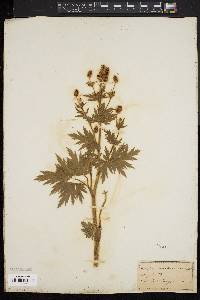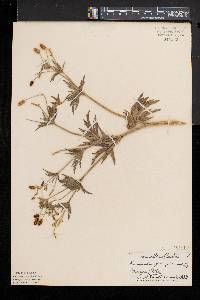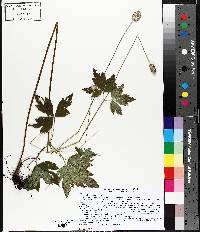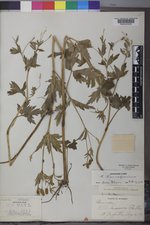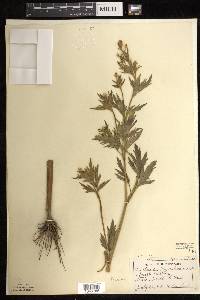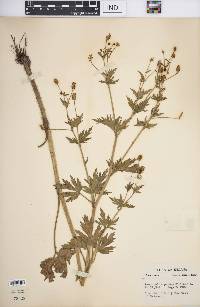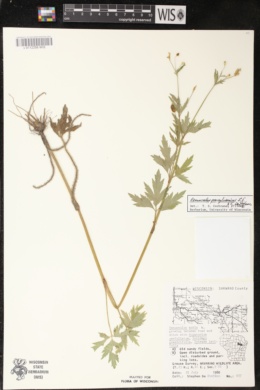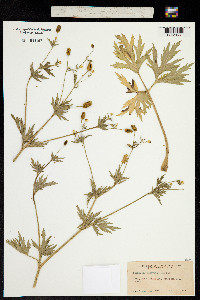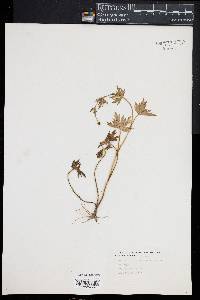Ranunculus pensylvanicus
|
|
|
|
Family: Ranunculaceae
Pennsylvania Buttercup, more...bristly buttercup
|
Stems erect, never rooting nodally, hispid, base not bulbous. Roots never tuberous. Basal leaf blades broadly cordate in outline, 3-foliolate, 1.6-7 × 3-9 cm, leaflets cleft, usually deeply so, ultimate segments narrowly elliptic, margins toothed, apex acute. Flowers: receptacle hirsute; sepals reflexed ca. 1 mm above base, 3-5 × 1.5-2 mm, ± hispid; petals 5, yellow, 2-4 × 1-2.5 mm. Heads of achenes cylindric, 9-12 × 5-7 mm; achenes 1.8-2.8 × 1.6-2 mm, glabrous, margin forming narrow rib 0.1-0.2 mm wide; beak persistent, broadly lanceolate or nearly deltate, straight or nearly so, 0.6-0.8 mm. 2 n = 16. Flowering late spring-summer (Jun-Aug). Stream banks, bogs, moist clearings, depressions in woodlands; 0-1700 m; Alta., B.C., Man., N.B., Nfld., N.W.T., N.S., Ont., P.E.I., Que., Sask.; Alaska, Ariz., Colo., Conn., Del., D.C., Idaho, Ill., Ind., Iowa, Maine, Md., Mass., Mich., Minn., Mont., Nebr., N.H., N.J., N.Mex., N.Y., N.Dak., Ohio, Pa., R.I., S.Dak., Vt., Wash., W.Va., Wis., Wyo. Ojibwa tribes used Ranunculus pensylvanicus as a hunting medicine; the Potawatomi used it as an astringent for miscellaneous diseases (D. E. Moerman 1986).
FNA 1997, Martin and Hutchins 1980, Kearney and Peebles 1969 Duration: Perennial Nativity: Native Lifeform: Forb/Herb General: Perennial with erect, hollow stems, never rooting nodally, the roots never tuberous, to 30 cm or more. Leaves: Numerous, ternately compound, basal leaves broadly cordate in outline, 1.5-7 cm long by 3-9 cm wide, the leaflets cleft into laciniate or toothed segments, ultimate segments narrowly elliptic, with toothed margins and an acute apex. Flowers: Solitary with an hirsute receptacle, with reflexed sepals about 1 mm above base, 3-5 mm long by 1.5-2 mm wide, more or less hispid, 5 yellow petals, 2-5 mm long by 1-2.5 mm wide. Fruits: Cylindric to ovoid head of achenes 9-12 mm tall by 5-7 mm broad, the achenes 2-3 mm long by 1.5-2 mm wide, glabrous with the margin forming a narrow rib, the beak persistent, straight. Ecology: Found in moist to damp soils, along streambanks and in moist sites in forests, woodlands or bottomlands from 3,000-8,000 ft (914-2438 m); flowers June-August. Notes: Distinguished by the erect and hollow stems, the ternately compound leaves and the delicate, minute flowers. Ethnobotany: Used as a hunting medicine, and as a red or yellow dye. Etymology: Ranunculus is from Latin rana, little frog, for the moist habit, while pensylvanicus means of or from Pennsylvania. Synonyms: None Editor: SBuckley, 2010 Spreading-hairy annual or perennial, erect, simple or branched, 3-7 dm; basal lvs soon withering, cauline few, petioled; lf-segments 3, the terminal one stalked, all deeply 3-lobed, the lobes toothed or incised; fls few, short-pedicellate; pet obovate, 2-4 mm, shorter than the reflexed sep; anthers 0.7-1 mm; achenes in a cylindric or ovoid-cylindric head mostly 10-15 mm, subrotund, 1.8-2.7 mm, sharply margined; beak flat-subulate, 0.6-1.4 mm, straight or curved; 2n=16. Marshes, ditchbanks, and wet meadows; Nf. to Alas. and e. Asia, s. to N.J., Pa., O., n. Ind., n. Ill., Minn., and Ariz. July, Aug. Gleason, Henry A. & Cronquist, Arthur J. 1991. Manual of vascular plants of northeastern United States and adjacent Canada. lxxv + 910 pp. ©The New York Botanical Garden. All rights reserved. Used by permission. From Flora of Indiana (1940) by Charles C. Deam Infrequent in wet places about lakes and in marshes and rarely in ditches in the lake area. Coulter reported it in his Catalogue for McDougal from Putnam County, but there is no specimen in the herbarium of DePauw University where McDougall's Indiana specimens are deposited. …… Indiana Coefficient of Conservatism: C = 6 Wetland Indicator Status: OBL |
|
|
|

